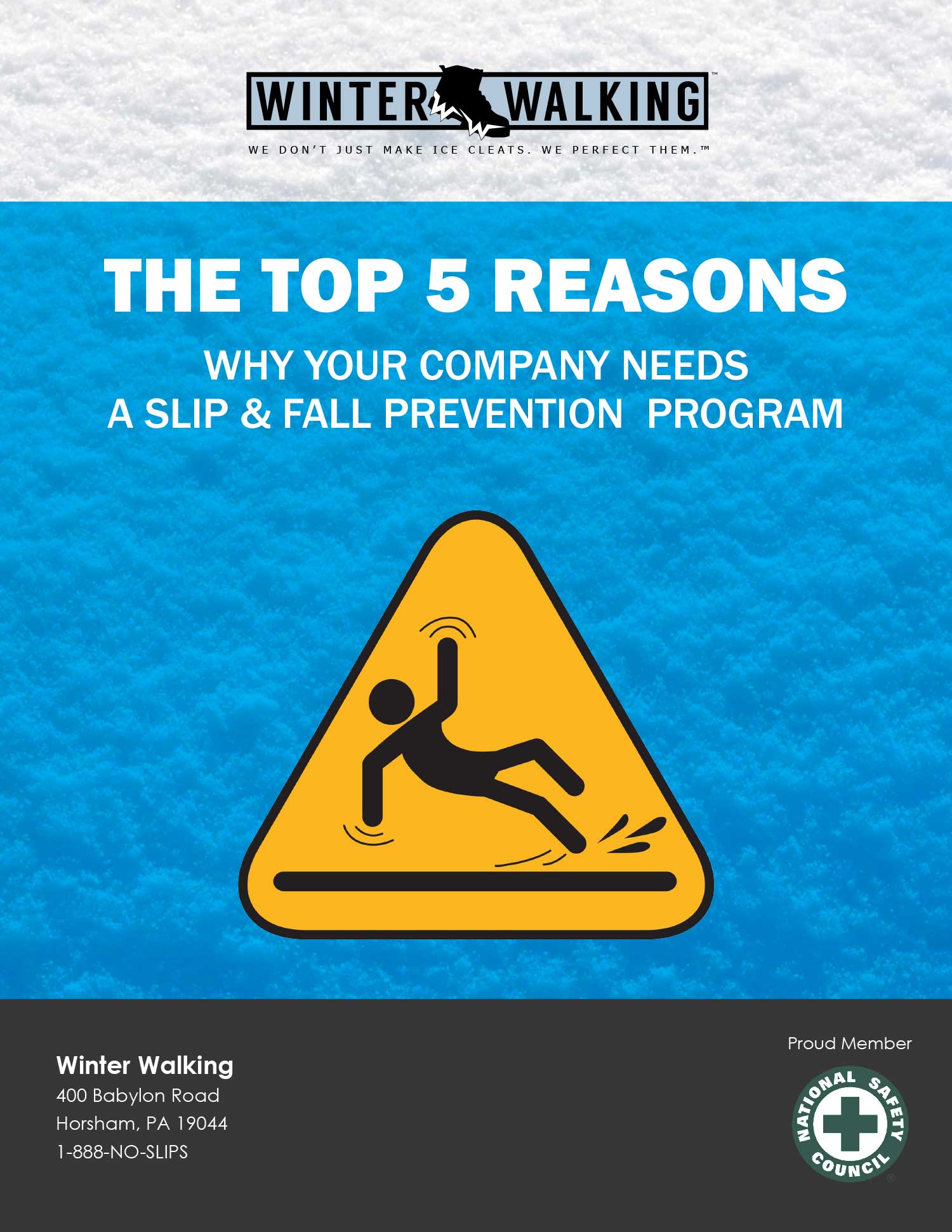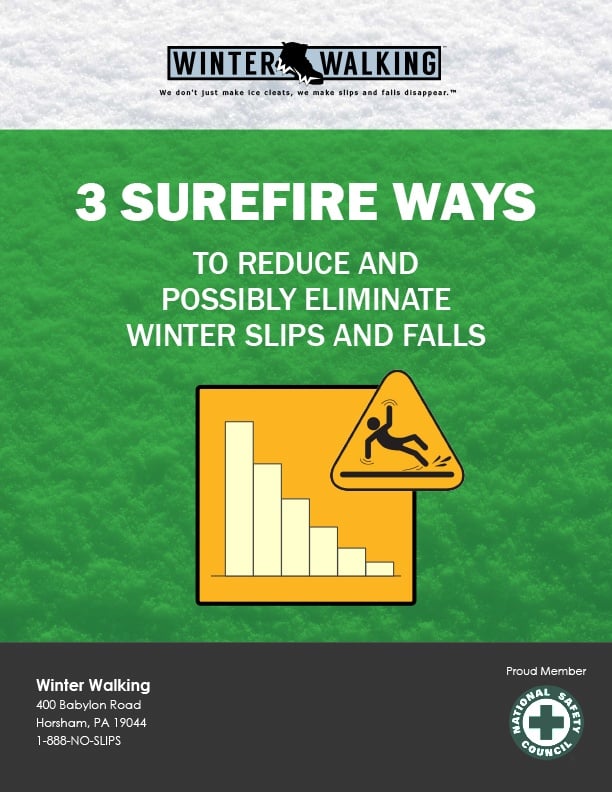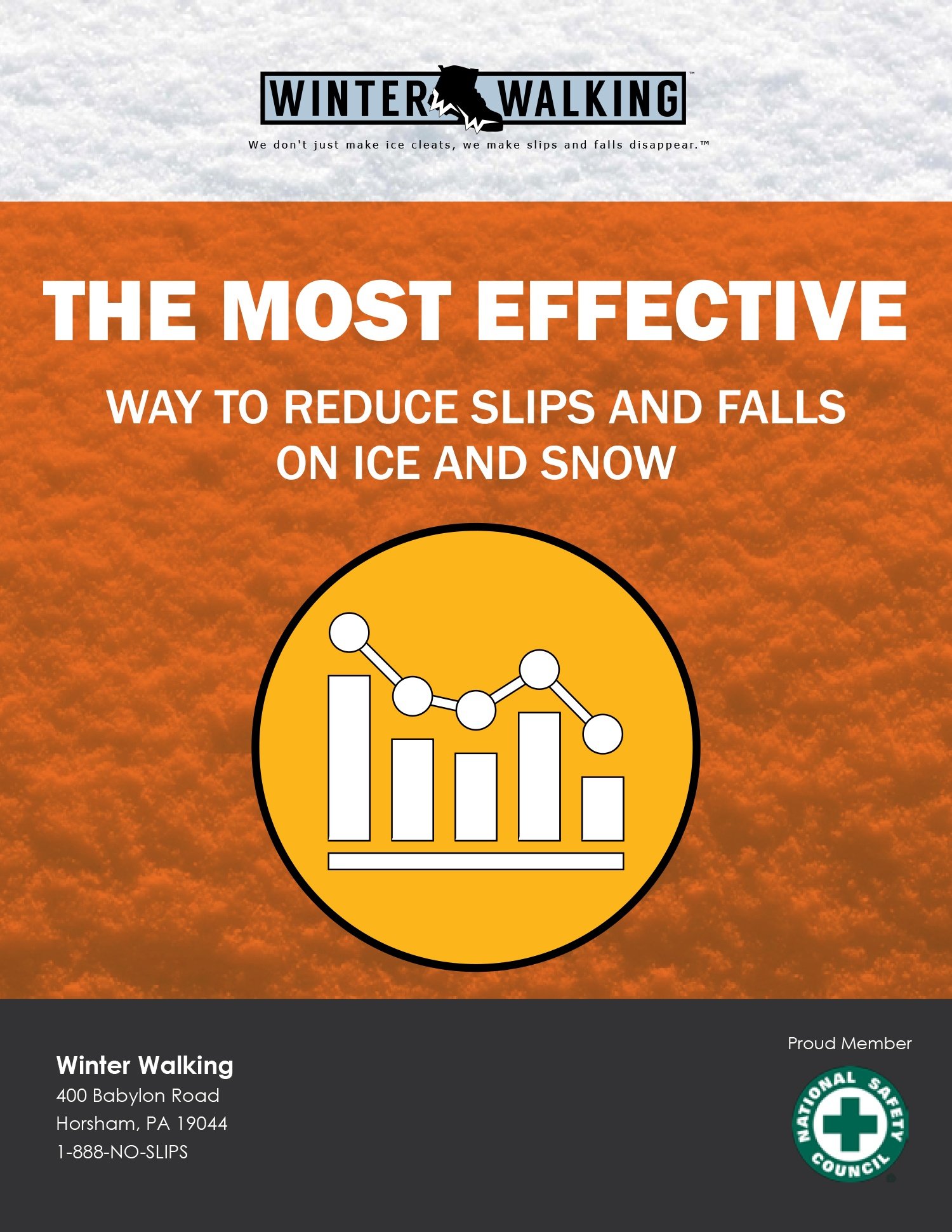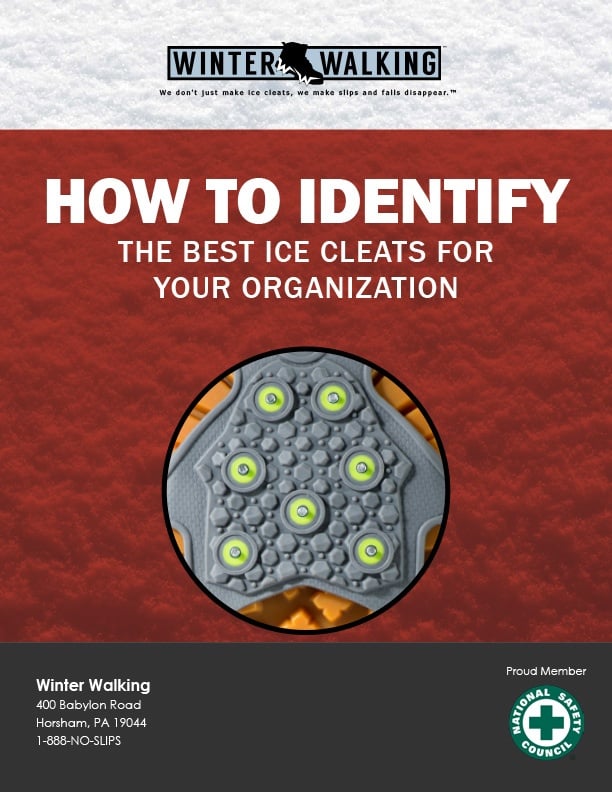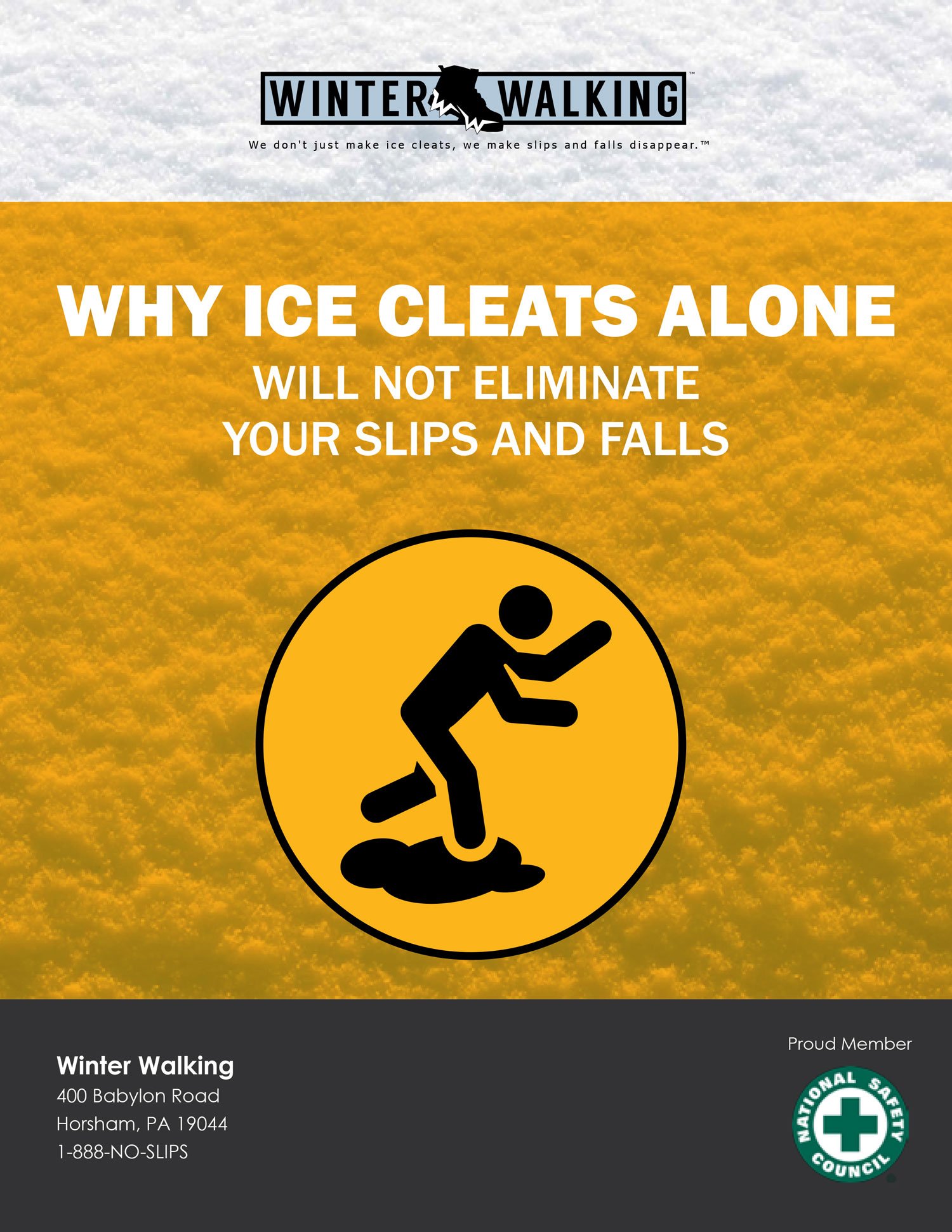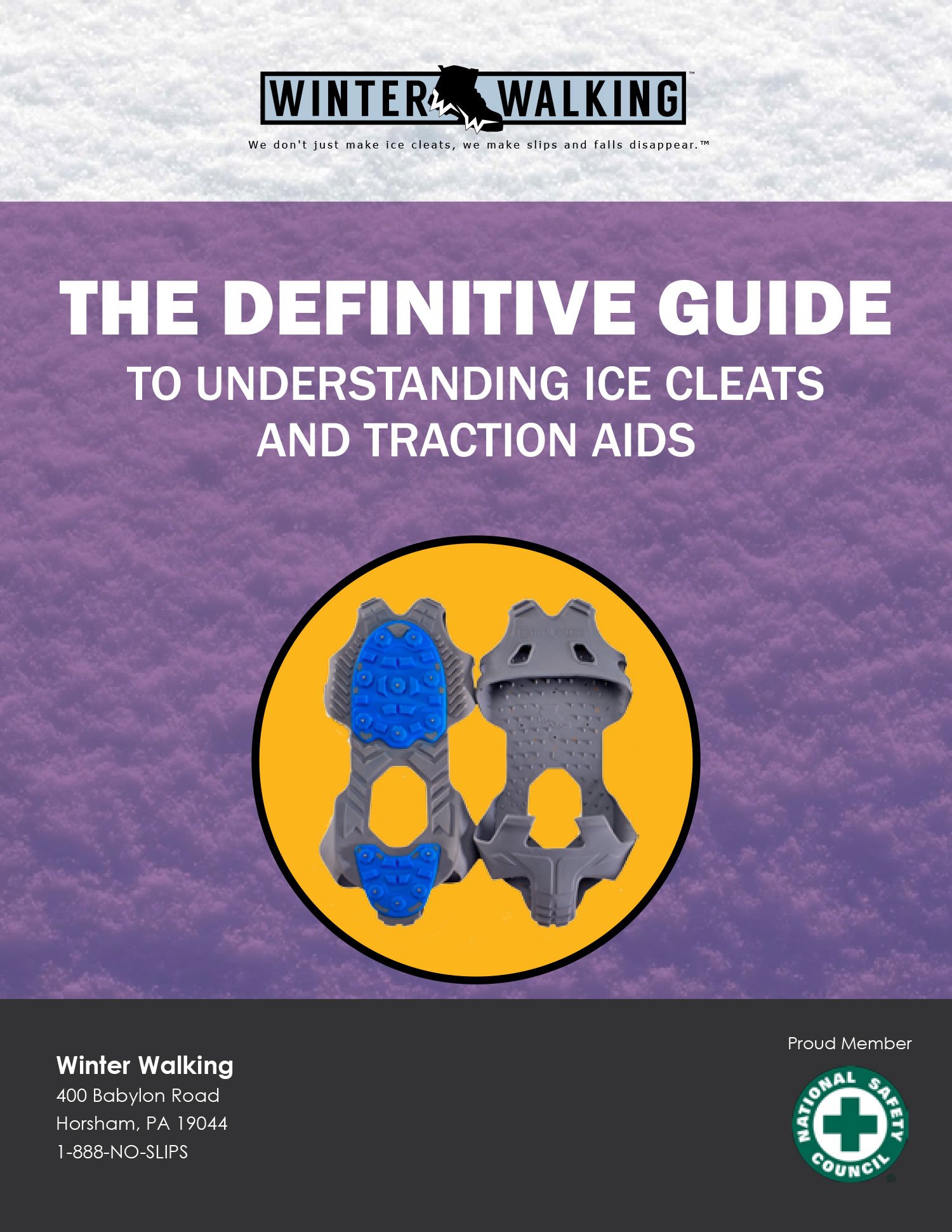When it comes to ice cleats, opinions tend to fall into two categories. Some see them as a “last resort,” only breaking them out when sidewalks are icy and unavoidable. Others view them as a non-negotiable part of workplace safety gear, just as essential as steel-toe boots or safety glasses.
But here’s the reality: winter slips and falls aren’t minor inconveniences; they’re one of the leading causes of workplace injuries during the colder months. Treating ice cleats as optional puts your team and your company at unnecessary risk.
The Role of PPE in the Workplace
Ask yourself this: why do your employees wear the Personal Protective Equipment (PPE) they use today? The answer is simple, because it’s required.
-
Safety glasses protect against flying debris.
-
Steel-toe boots prevent crushed toes from heavy equipment.
-
Hard hats shield against falling objects.
-
High-visibility clothing ensures workers are seen in low-light environments.
None of these PPE requirements were put in place by accident. They became mandatory because of real injuries that impacted both employees and the company. By learning from past incidents, companies acted to protect workers and reduce costly accidents.
So why should winter slip-and-fall prevention be treated any differently?
Ice Cleats: The “Missing Piece” of Winter Safety
Think about it: if employees cut their hands, you’d require safety gloves. If they suffered head injuries, you’d mandate hard hats. And if workers were experiencing regular slips and falls in winter, the natural solution should be mandatory ice cleats.
Too often, companies leave the choice up to employees: “Wear them if you want.” But let’s be honest, how many people voluntarily choose discomfort or inconvenience? Not many. And every time an employee opts out, your company is rolling the dice with safety, productivity, and costs.
A Parent’s Perspective on Safety
Think about how you approach safety as a parent. Do you ask your child if they want to brush their teeth? No, you insist, because you know the long-term benefits outweigh the short-term inconvenience.
Workplace safety works the same way. Giving employees the option to forgo PPE is like giving kids the option to skip dental hygiene. In both cases, the consequences will catch up eventually, and they’ll be far more costly to deal with than prevention.
The True Cost of Winter Slips and Falls
Workplace slips and falls aren’t just painful; they’re expensive. They lead to:
-
Lost workdays and reduced productivity
-
Workers’ compensation claims
-
Higher insurance premiums
-
Damaged safety records that can affect your company’s reputation
Many organizations today are striving for a “Zero Accident” workplace safety culture. But achieving that goal requires consistency. You can’t aim for zero accidents while leaving winter safety up to individual choice.
The Numbers Don’t Lie: Ice Cleats Reduce Injuries
Here’s where the statistics speak volumes. Studies have shown that mandatory ice cleat programs can reduce slips and falls on snow and ice by 70% to 100%. That’s not a small improvement, that’s a near elimination of a preventable injury category.
Imagine the benefits:
-
Fewer injuries.
-
Lower medical and compensation costs.
-
Stronger safety culture.
-
Employees who feel genuinely protected and valued.
Turning Safety into Culture, Not Choice
The companies that thrive in today’s business environment are the ones that go beyond compliance, they prioritize employee safety as a core value. By making ice cleats mandatory PPE, you’re sending a clear message:
“We value your safety as much as your productivity.”
And here’s the kicker, when employees feel protected, they’re more engaged, more loyal, and more productive. Safety isn’t just compliance. It’s a business advantage.
Conclusion: Ice Cleats Are Essential PPE, Not Optional Gear
At the end of the day, ice cleats shouldn’t be viewed as a last-ditch accessory, but as a required piece of PPE, right alongside steel-toe boots and hard hats.
Winter slips and falls are preventable. By mandating ice cleats, you protect your employees, strengthen your safety record, and reduce costs. Most importantly, you build a culture where safety isn’t an afterthought, it’s a standard.
Your next step? Evaluate your current PPE policies. If ice cleats aren’t already on the mandatory list, it’s time to add them. Because when it comes to protecting your team, waiting until “absolutely necessary” is already too late.
Thank you for reading. If you found value in this post, please consider sharing it with your LinkedIn network or simply “like” it.
Bill Coyne is the VP of Sales for Winter Walking. He has been helping organizations across a wide variety of business sectors prevent workplace slips and falls in ice and snow for over 20 years. Winter Walking currently helps some of the world’s largest organizations keep their employees both safer and more productive while working outdoors in the winter season. Contact bill@winterwalking.com or visit www.winterwalking.com.


